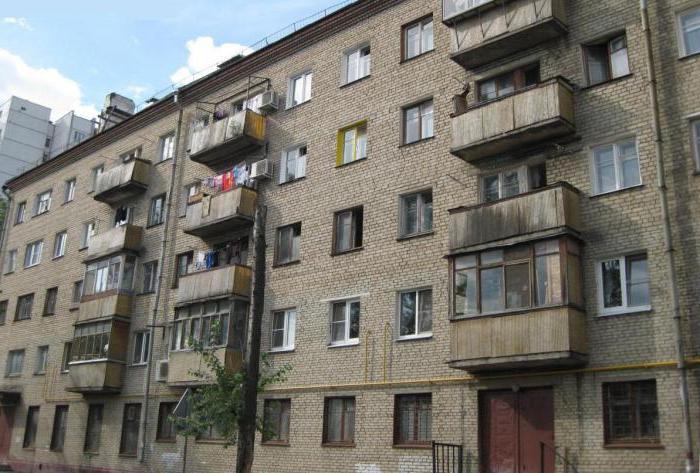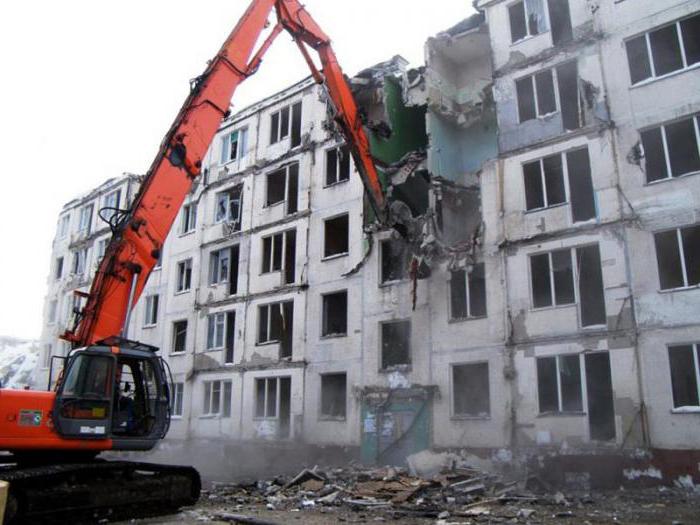On the secondary housing market in mostRussian cities "reign" three types of apartments: "Stalin", "Khrushchev" and "Brezhnevka". It is important for those interested in selling or buying these premises to clearly see the differences between them, as well as to know the key advantages and disadvantages of such apartments.
The main types of apartments
Before finding out how the "Brezhnevka" differs from the "Khrushchev" and "Stalin", let us examine all the main types of apartments in Russia:
- Stalin's apartments. Living quarters in houses built during the rule of J. Stalin - in 1930-1940.
- "Khrushchev". Apartments in brick or panel houses, massively built in 1950-1960.
- "Brezhnevka". Typical apartments in high-rise buildings erected in 1960-1980.
- "Improved". Apartments improved planning in the houses of the 1980s. They were distinguished by an increased area, a separate bathroom, a spacious kitchen and balconies (loggias); the house was a garbage chute, elevator.
- Modern monolithic houses. Spacious open-plan apartments, with different ceiling heights, with strong and durable walls.
- Apartments in modern panel and block houses.

To understand the difference between "Khrushchev" from "Brezhnevka" or "Stalin", briefly describe each group of apartments.
"Stalin": open space and high ceilings
Stalin’s houses are also somewhatbeautiful creations in the spirit of neoclassicism with a height of 2-5 floors. The main material for them was brick (white, red), which was covered with plaster at the finishing stage. An interesting point: in the pre-war "Stalin" concrete were only floor ceilings of the first floor and the ceiling of the last floor, while interior floors were wooden. In the post-war houses all the floors were of reinforced concrete.

"Stalin" is mostly multi-roomapartments (3-4 rooms), it is very rare among them there are one-, two-room. The premises have good footage, spacious kitchens and hallways, isolated rooms, in some cases balconies. But most of all "Stalin" is appreciated for the height of the ceilings - 2.8-3.2 m.
"Khrushchev": a small, but its
Continuing to talk about what is different"Khrushchev" from "Brezhnevka", we analyze the characteristics of the premises built during the rule of Stalin's successor. The motto of the construction of residential buildings, which started in 1955 according to the decree "On the Development of Housing Construction in the Soviet Union," was the slogan: "Every family has a small, but its own housing!"

"Khrushchev" - this is a typical brick or panelhouses of 3-5 floors, with low ceilings (2.5 m), without access amenities (elevator and toilet). Architectural values such buildings are not represented - they were built only to eliminate the shortage of housing. One- and two-room apartments were distinguished by poor sound insulation, the presence of adjacent uninsulated rooms, and a small combined bathroom.
"Brezhnevka": improved skyscrapers
What is different "Khrushchev" from "Brezhnevka" photoeloquently shows: the houses of the era of Leonid Ilyich are already high-rise buildings of 5-14 floors. All of them were built, changed, modernized according to one document - the Unified catalog of building details. "Brezhnevka" and became in many ways the prototypes of modern comfortable new buildings. The layout of such apartments has significantly improved, garbage lines and elevators have appeared at the entrances, and the stairways and platforms have become more spacious.

Inside the apartment of the Brezhnev era can be seenalready separate bathroom and toilet, waterproofing in the bathrooms, a large area of rooms. However, there remained the same close kitchen, corridor and sanitary facilities. That's all. Now you know the difference between "Khrushchev" and "Brezhnevka" in planning.
Clear Advantages
Like everything else, the ones listed aboveapartments have their pros and cons. To have a complete understanding of the differences between the apartment "Khrushchev" from "Brezhnevka" and "Stalin", consider all their advantages:
- "Stalin":good location (in most cities such apartments are in the center), spacious layout, high ceilings, excellent heat and sound insulation, large windows, isolated rooms, warm and dry brick houses, smooth walls and ceilings.
- "Khrushchev": affordability, location, if not in the center, then in an area with already quite developed infrastructure.
- "Brezhnevka":isolated rooms, a good location in the city, the presence of an elevator and a garbage chute, convenient planning, the relative "youth" of the building, and in prefabricated houses there are perfectly flat walls and ceilings.

Important disadvantages
To fully understand the difference between "Khrushchev" and "Brezhnevka" and "Stalin", let us get acquainted with the repulsive characteristics of such apartments:
- "Stalin":the first floors are guaranteed to be free of loggias and balconies (not counting the amateur activities of the previous owners), unreliable ceilings, the high cost of the apartment itself and repairs in it, tangible deterioration of both the building and its communications, the lack of modern infrastructure - elevator, garbage chute, underground parking, etc dd
- "Khrushchev":high degree of wear, the possibility of cracks and fungus on the walls, low ceilings (2.5 m), significantly weak sound insulation, poor insulation (it is hot in summer and cold in winter), adjacent or walk-through rooms, uncomfortable narrow corridors and stairwells, small kitchens and rooms, combined bathroom, the recommended period of operation of the structure - 25 years.
- "Brezhnevka":small kitchens, walls that require frequent repairs (leaks in the outer walls, loose seams in the interior), there is no elevator in the 5 floors, because of the batteries mounted in the wall it is cold in winter, because of concrete subsidence the floor becomes noticeably uneven.
Thus, the "Stalin" - the most expensive, but alsoless demanded. "Khrushchev" and "brezhnevki" quickly find a buyer, attracting its availability. In this case, all types of secondary housing have a large list of both advantages and disadvantages.











